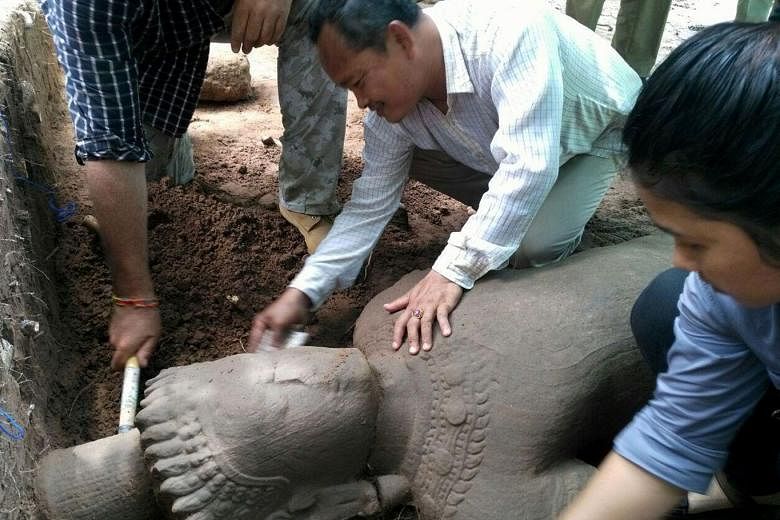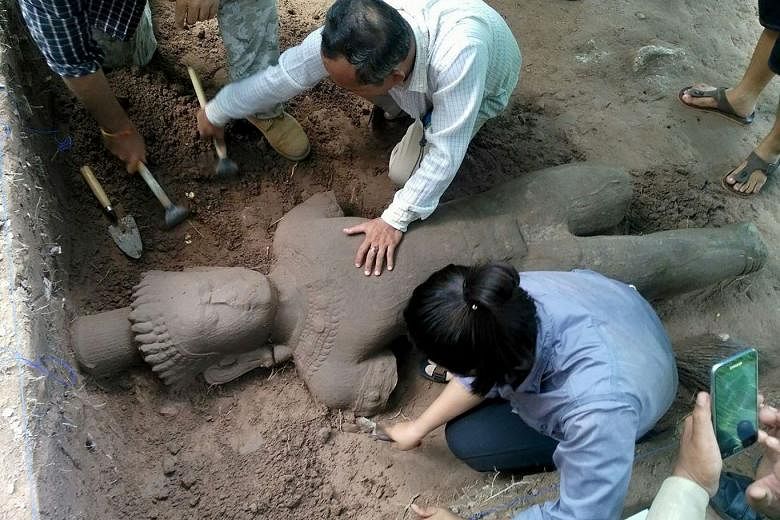PHNOM PENH (AFP) - Archaeologists have unearthed a large, centuries-old statue that is believed to have once stood guard over an ancient hospital at Cambodia's famed Angkor temple complex.
The nearly two-metre-tall carving, which is thought to be from the late 12th to the early 13th century, was discovered during a dig on Saturday (July 29), said Long Kosal, a spokesman for Apsara Authority - the state agency charged with managing the complex.
The Angkor Archeological Park, a world heritage site, contains the remains of the different capitals of the Khmer Empire, dating from the 9th to the 15th centuries, and is Cambodia's most popular tourist destination.
At the height of its power the city and its hundreds of temples boasted more than a million inhabitants, making it one of the world's most populous pre-industrial centres.
Huge swathes of the park have been excavated over the decades, creating a walkable archaeological wonder that attracts more than two million visitors a year.
But the complex remains a treasure trove for yet to be discovered finds.
Cambodian archaeologists and experts from Singapore's ISEAS - Yusof Ishak Institute found the statue buried 40 centimetres under the ground during an excavation of an Angkor-era hospital built during the reign of King Jayavarman VII.
The Apsara agency said the sandstone statue's arms and legs had broken off but the carving on the body and head "remain beautiful" despite the passage of time.
They said the statue was likely to have been a symbolic guardian of the hospital.


